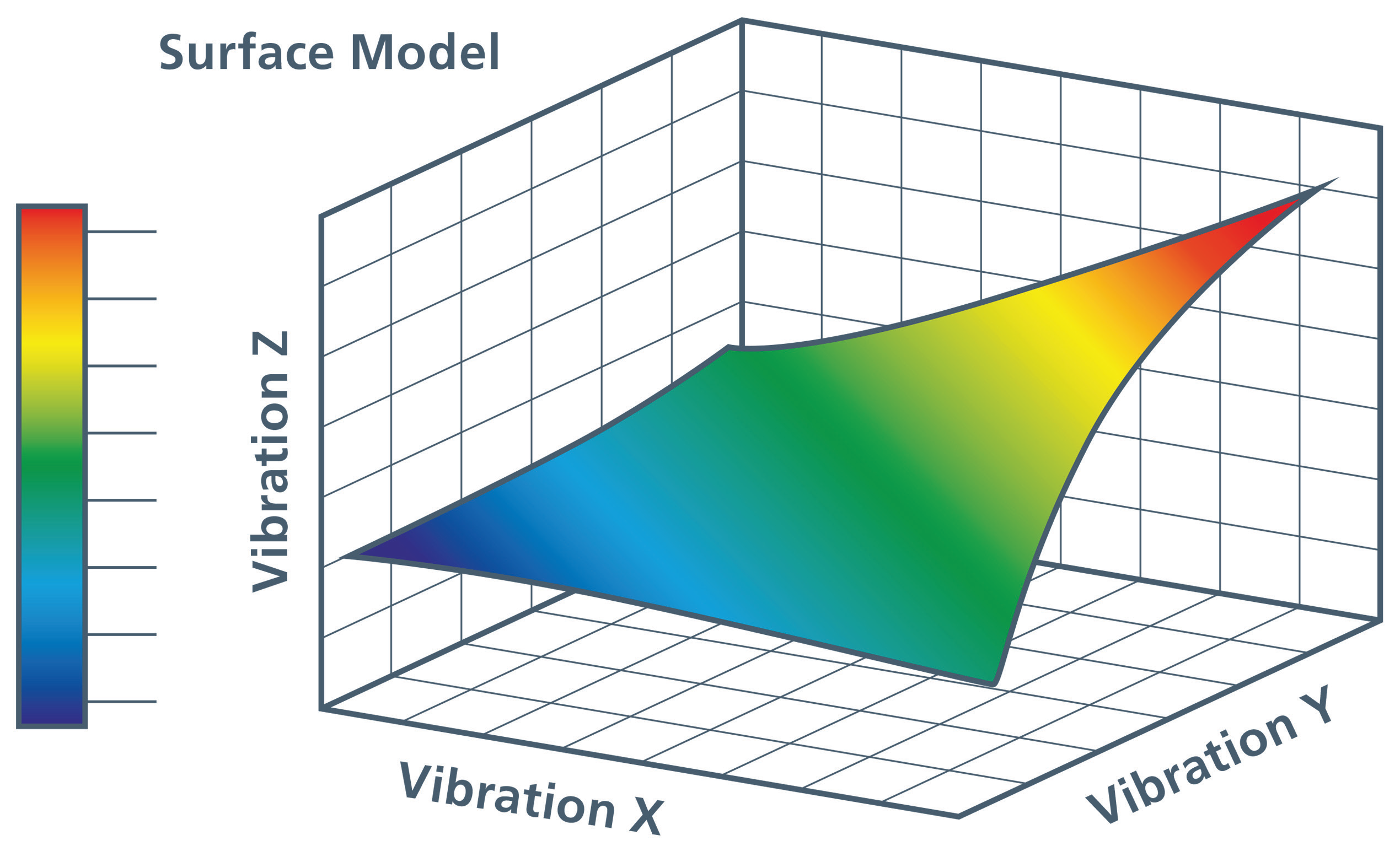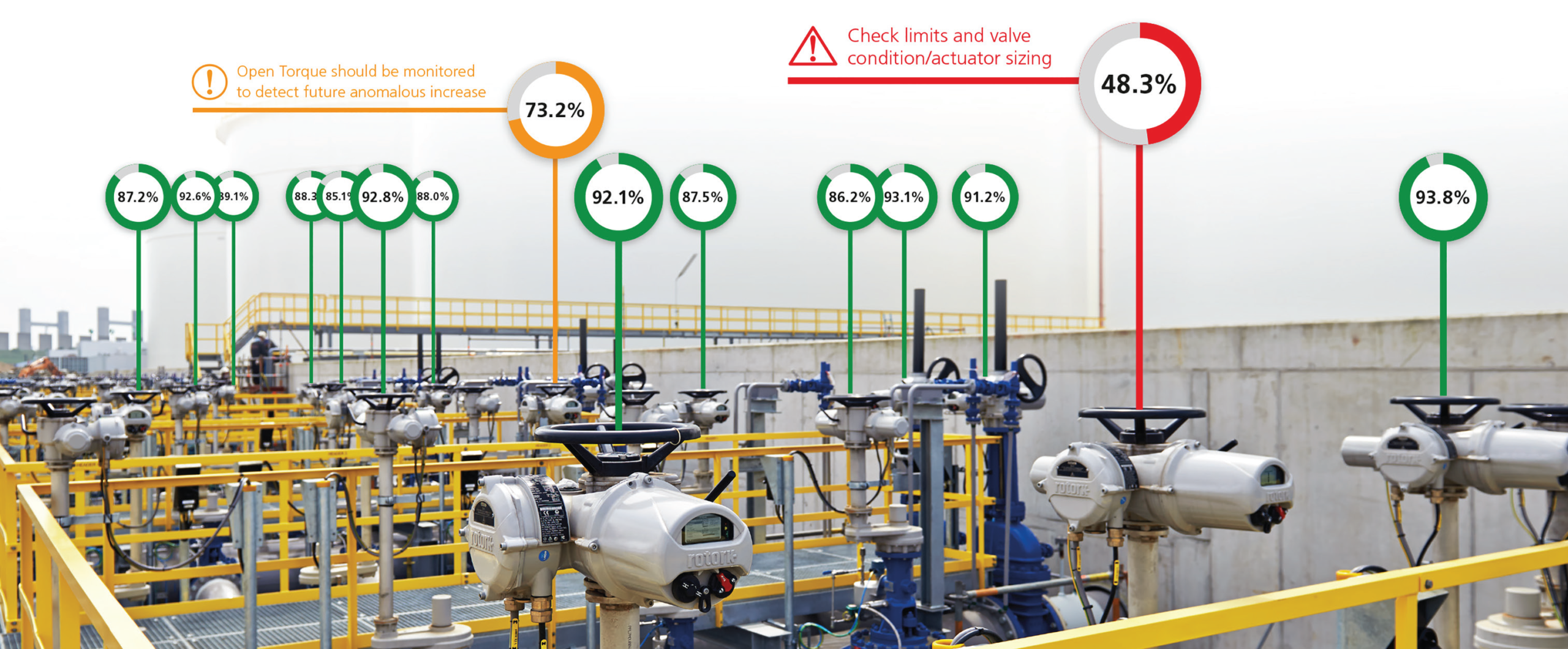The principle behind intelligent actuation and asset management is the concept of the Industrial Internet of Things (IIoT), where, using devices embedded with sensors, electronics and software, data can be collected and exchanged on a large scale to enable improved communication and efficiency.
The value of data provided by the digitization of systems cannot be overstated. However, a location must be equipped with the right technology that can provide meaningful information in order to receive data. An intelligent actuator with data logging capabilities is essential for a working digital asset management system.
By Mike Devrell, Intelligent Asset Management Program Manager – Rotork Controls
Modern Intelligent Actuator Technology
Modern intelligent actuator design is focused on enhanced functionality, particularly in areas associated with planned maintenance and asset management. An indication window on an actuator can serve as a focal point of communication and provide information in a clear visual way. This will include menus for set-up, configuration and commissioning, local position indication, valve and actuator status, asset management and diagnostic operating information stored in the actuator data logger.
The technology in a modern intelligent actuator can provide a wide variety of data, recording torque, temperature, vibration levels and recording events in a data log. The ability to objectively analyze this information and identify the key areas that are important for each site’s specific requirement is essential for effective maintenance. Additionally, plant operators can use the information from the diagnostics.
The information utilized to improve asset management diagnostics is stored in a data logger file, which can be downloaded and analyzed.
An intelligent electric actuator provides a wide variety of critical data on its display. Vibration, for example, can severely affect the performance of plant equipment and longevity, and its effects are cumulative. Vibration levels can vary significantly, depending on many factors, including flow rates and process conditions. This can make it difficult to capture with mobile measuring devices.
An intelligent actuator can include a vibration sensor that measures and captures vibration levels. The IQ series of actuators can capture vibration levels in the range of 10 Hz to 1k Hz (root mean square average) and peak acceleration (maximum g) in 3 axes (x, y and z). Vibration trend logs can be downloaded and viewed using Insight 2 software.
Insight 2 is a visually interactive application that facilitates the review and configuration of the setup and data logger information for Bluetooth-enabled actuators. Insight 2 enables the user to pre-configure actuator missions on a PC, transfer them to a Bluetooth setting tool Pro and transmit them to the actuator on site.
Using Intelligent Asset Management to Better Control a Site
There are multiple benefits of asset management technology, such as improving safety, reducing environmental damage, and schedule planning, all of which can contribute to improving uptime. This means they can be quickly rectified before they turn into a more serious problem or cause a shutdown. An unplanned plant shutdown can be very costly and can sometimes result in added risks to the environment or safety.
As previously stated, one significant advantage of intelligent asset management is the integration of diagnostics. An intelligent asset management program takes data log data, which can be displayed by using Insight 2 and analyzes it to determine actuator condition, predict upcoming issues, and recommend actions to be taken. Diagnostics can include vibration analytics, usage statistics, torque profiles and health scores, among many other valuable data points.

Valve seating, sealing and other mechanical issues can be detected from only subtle changes in torque. Additionally, when analyzing different parts of the torque curve, issues with the actuator’s drive bush, gearbox, motor, bearing and valve issues can often be detected. The analysis takes several factors into account when detecting warnings or alerts.
Field Communication Control Networks
Comprehensive network communication is invaluable to improve the efficiency of modern actuation. An operator at a site using a network can monitor up to 240 actuators on a single fault-tolerant field network that is up to 20 km long without repeaters while maintaining constant control over the operation 24/7, 365 days a year.
Network systems work with gateways, which provides a number of benefits, including a touchscreen interface, which allows the user easy access to configuration tools and features.
For example, Rotork’s Master Station uses Modbus for host communication via Ethernet (Modbus TCP) and/or a serial highway (Modbus RTU). The host is provided with a single open industry standard interface for process control information thanks to the Master Station’s database, which is delivered to the host independently of the field network protocol. Additionally, locations with legacy Master Stations will already have the database structure pre-mapped.
Compatibility is via network cards that are fitted in the main electronics enclosure of an actuator with full integration with the site’s existing plant control system. A wide selection of network interface cards allows plants to be controlled and monitored by computer using digital ‘bus’ network systems communication to the Distributed Control Systems (DCS).

Smart Actuation at Water Resource Recovery Facility in Michigan, U.S.
A recent example of intelligent electric actuators providing a vital role can be seen at a water resource recovery facility in Michigan. The site has the capacity to process approximately 18.75 million gallons of water daily and provides wastewater treatment for the entire city of East Lansing, Michigan State University and the Meridian Charter Township.
The actuators installed serve a variety of roles, including the operation of flow control valves, sluice gates, ball control valves, AWWA butterfly valves and eccentric plug valves. The actuators are able to accurately control the exact amount of flow. Going beyond simple open/close functions, they can move the valves and gates to exact positions to provide complete control of flow in the process. In addition to this modulating service, the actuators also provide an isolating service in a new digester process. The digester process breaks down the waste material to produce biogas and the actuators ensure that the flow of municipal wastewater can be stopped, should it be necessary to do so. These actuators are on a control network with an installed base of intelligent electric actuators connected through an open network standard (ONS) for communication networks.
ONS provides easy access to actuator process control and feedback information. They also may include an electronic data sheet description file that can be used to set up the actuator parameters to allow for system optimization.
Safe and Secure Local Monitoring and Control
A Remote Hand Station (RHS) can improve safety and allows the end user to remotely operate, interrogate and configure an actuator from a distance of up to 100 m. The RHS can duplicate the functionality of an intelligent actuator’s interface and provide data logs that can be viewed and downloaded locally instead of needing the user to access the actuator.
Power for an RHS is supplied by the actuator, removing the need for supplementary power supplies. The event logs from an RHS can be used to analyze torque profiles and event logs, further enhancing predictive asset management capability.
An example of the RHS providing particular value can be seen in Olathe, Kansas at a Water Treatment plant. Operating a gravity filter, 18 butterfly valves are situated in an area beneath a walkway which makes it difficult to access and operate the old actuators. The site was refitted with new intelligent actuators with the RHS system, which removed access issues.
Providing an exact duplicate of the actuator control knobs, display window and control interface, the RHS was mounted on the walkway to enable the user to operate, interrogate and configure the actuators below safely.
Conclusion
Modern intelligent electric valve actuation technology offers straightforward, secure, and affordable solutions. It also incorporates operational data logging to promote long-term effectiveness and intelligent asset management.
Information and data taken from modern intelligent actuators can be analyzed by specialist systems to assist with appropriate maintenance actions to ensure optimum performance. Proactive maintenance driven by this data can help reduce unplanned downtime and improve safety and efficiency for end users plant-wide.



